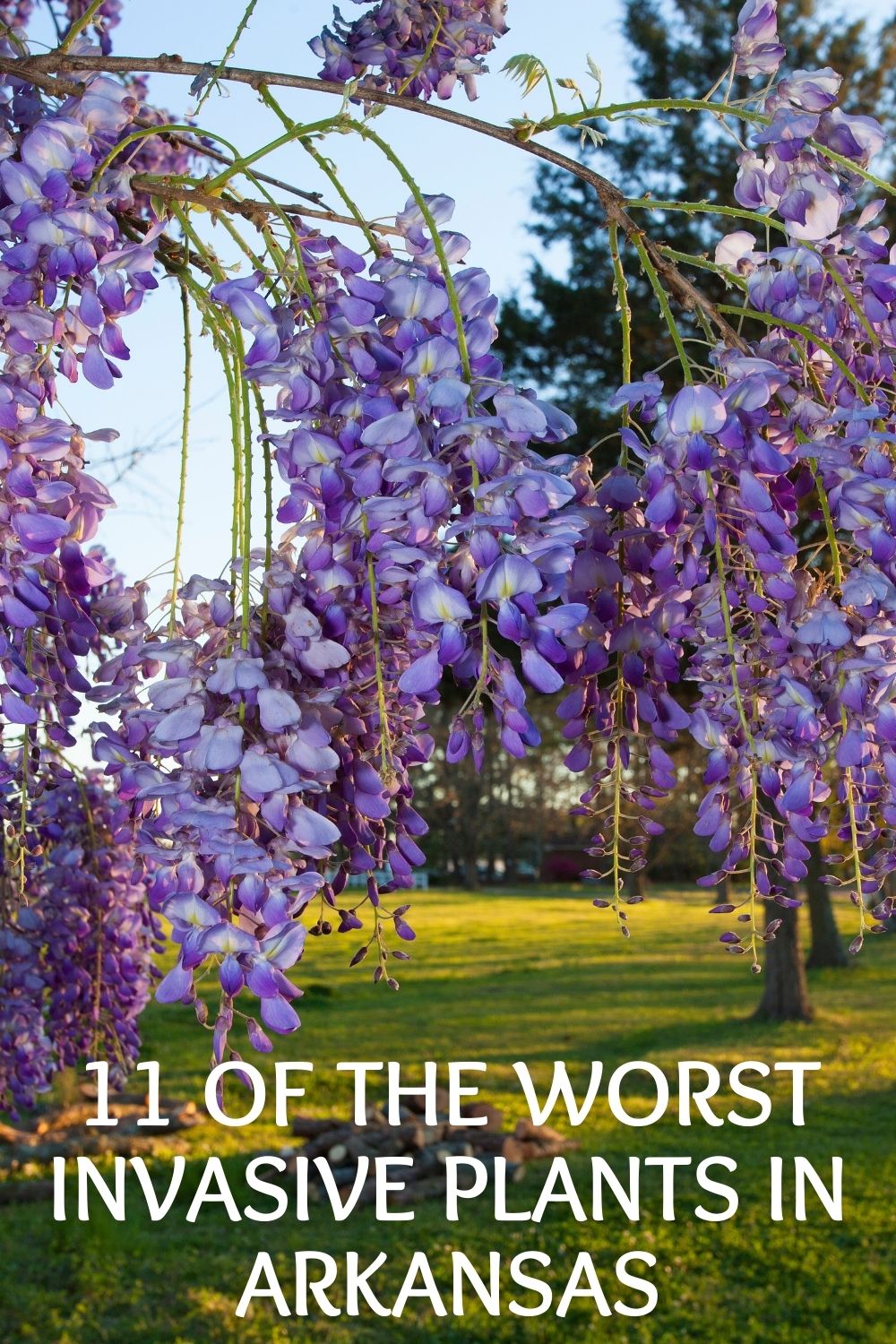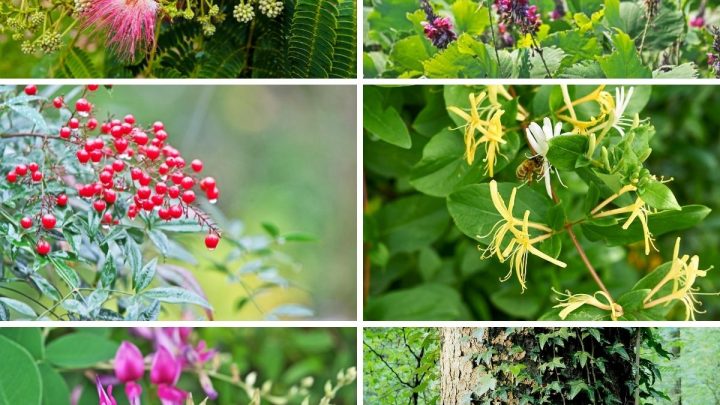In Arkansas, invasive plants degrade ecosystems, reduce crop field productivity, and even cause harm to livestock. These aggressive nonnative plants outcompete native species for water, nutrients, and growing space, changing landscapes and reducing wildlife habitat. The good news is, as a gardener, you can make a difference! Learn how to identify and control invasive plants in Arkansas, and grow native plants in your garden instead.
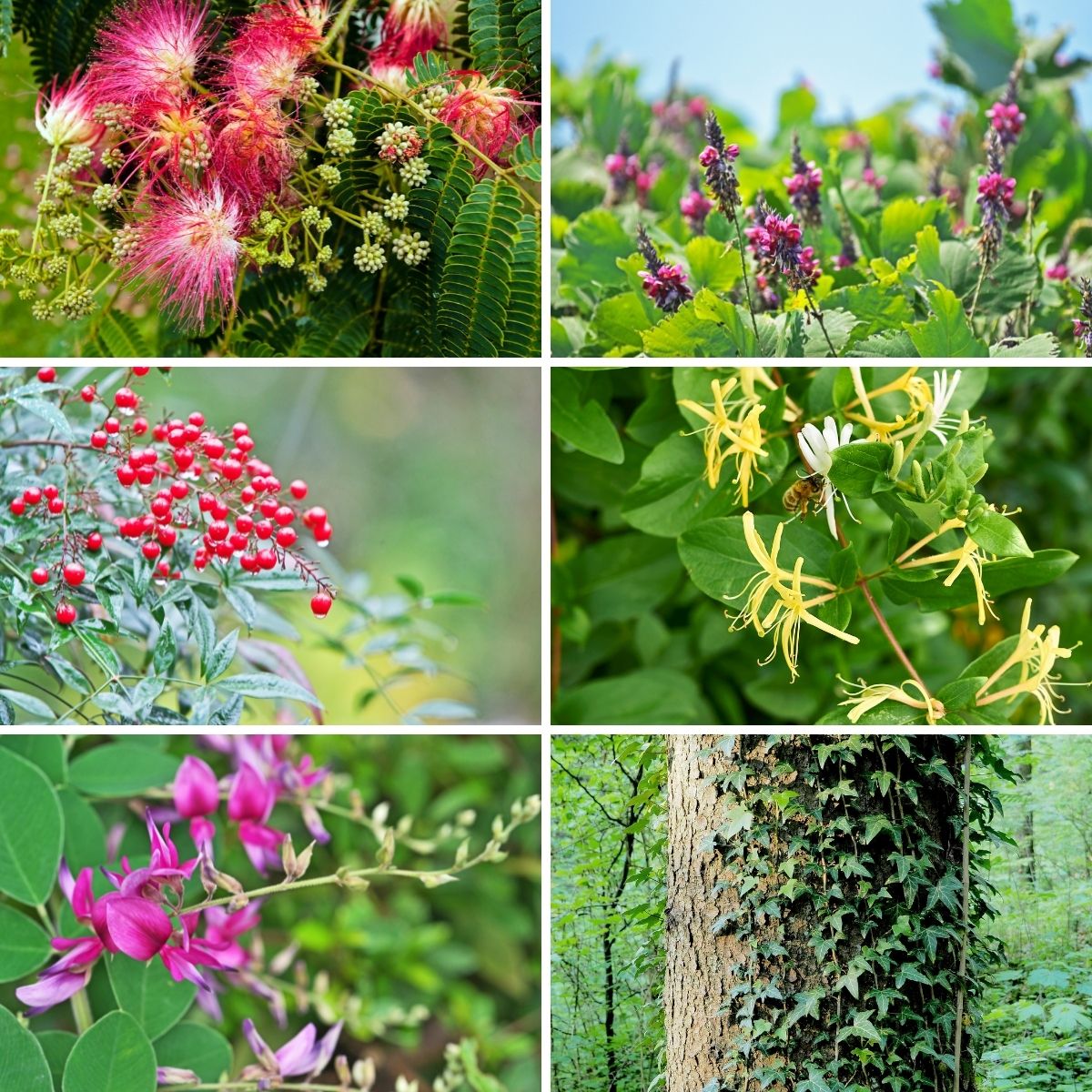
Check out this list of Arkansas native plants.
Invasive Plants in Arkansas
While there are many more invasive plants in Arkansas, the following species rank among the worst and most common.
1. Asian wisteria (Wisteria sinensis, W. floribunda)
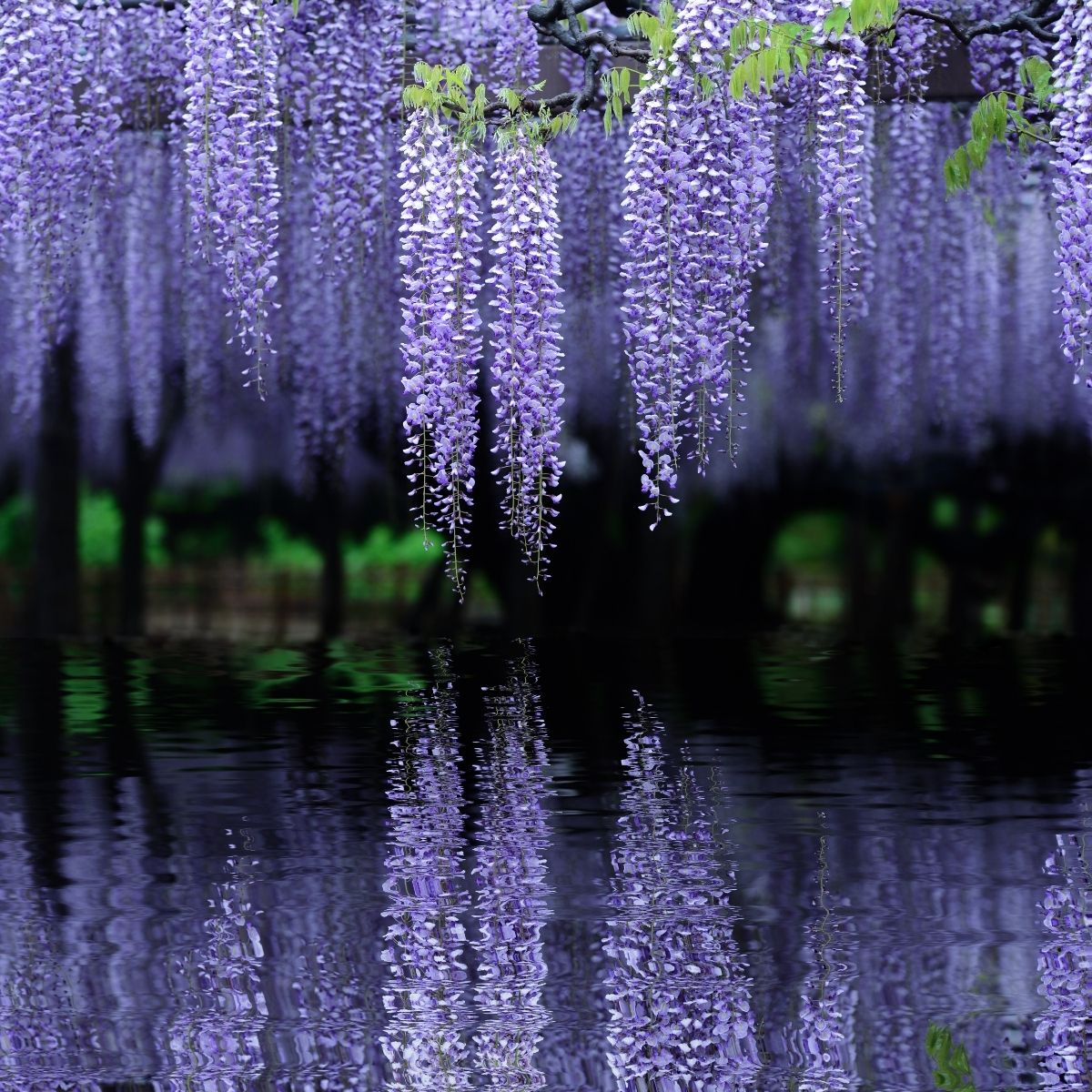
Asian wisteria, with its romantic, cascading, lavender blossoms, unfortunately, spreads very aggressively. These beautiful vines grow as long as 65 feet and can choke out trees and damage buildings.
While careful pruning twice a year can help keep it under control, nonnative wisteria should be cut off at the base and the stump painted with herbicide. Plant American wisteria (Wisteria frutescens) instead, or another native purple-flowering vine-like wild passion flower (Passiflora incarnata).
2. Bamboo (Phyllostachys spp.)
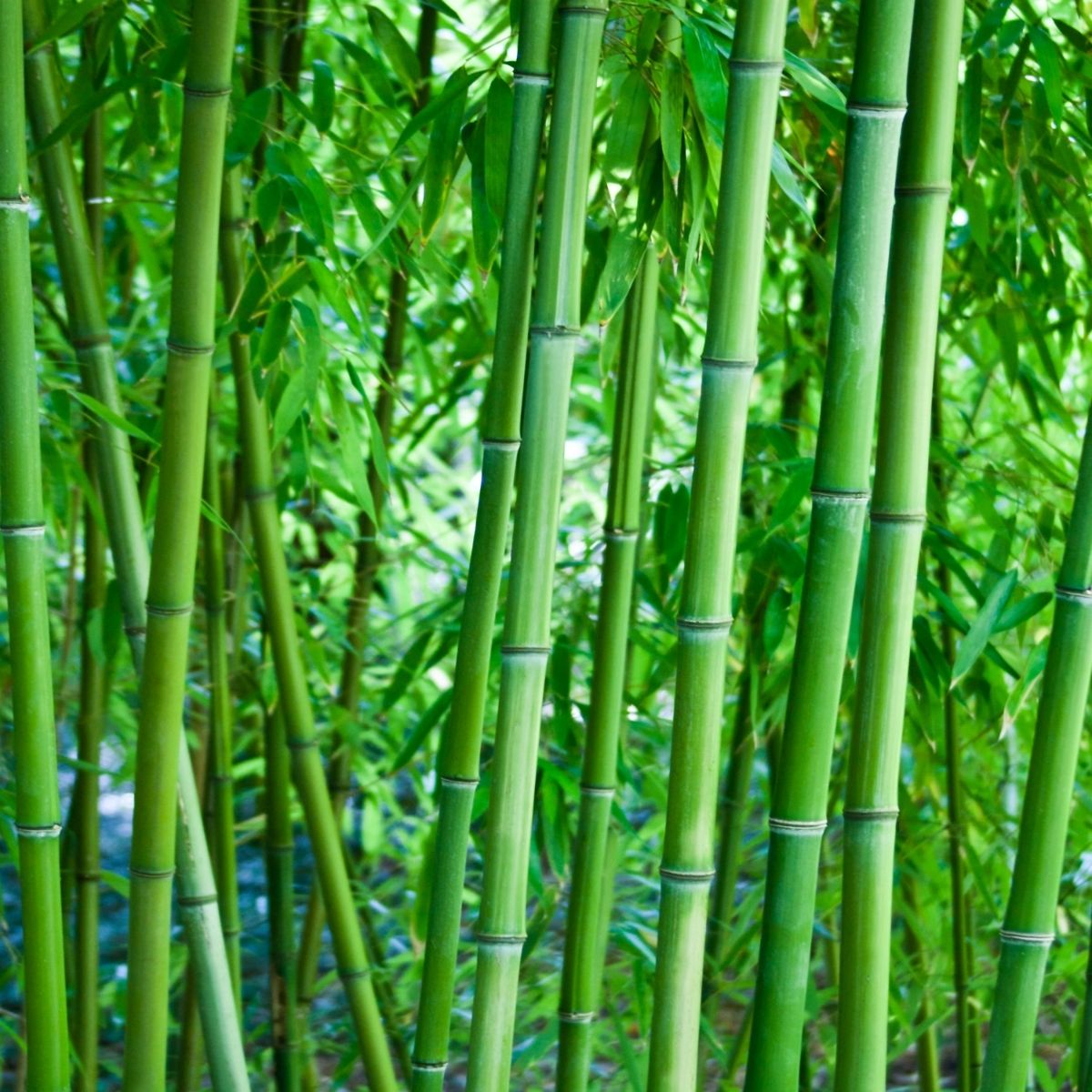
Bamboo grows rapidly, forming dense thickets up to 18 feet tall. It has sturdy, jointed, green or yellow stems covered in thin, lance-like foliage. Once established, bamboo can be extremely difficult to remove.
Control methods include regular mowing, digging up the root mass, and appropriate herbicide application. River cane (Arundinaria gigantea) is a very similar native alternative, while native thicket-forming shrubs like gray dogwood (Cornus racemosa) provide screening.
3. Bradford pear (Pyrus calleryana)
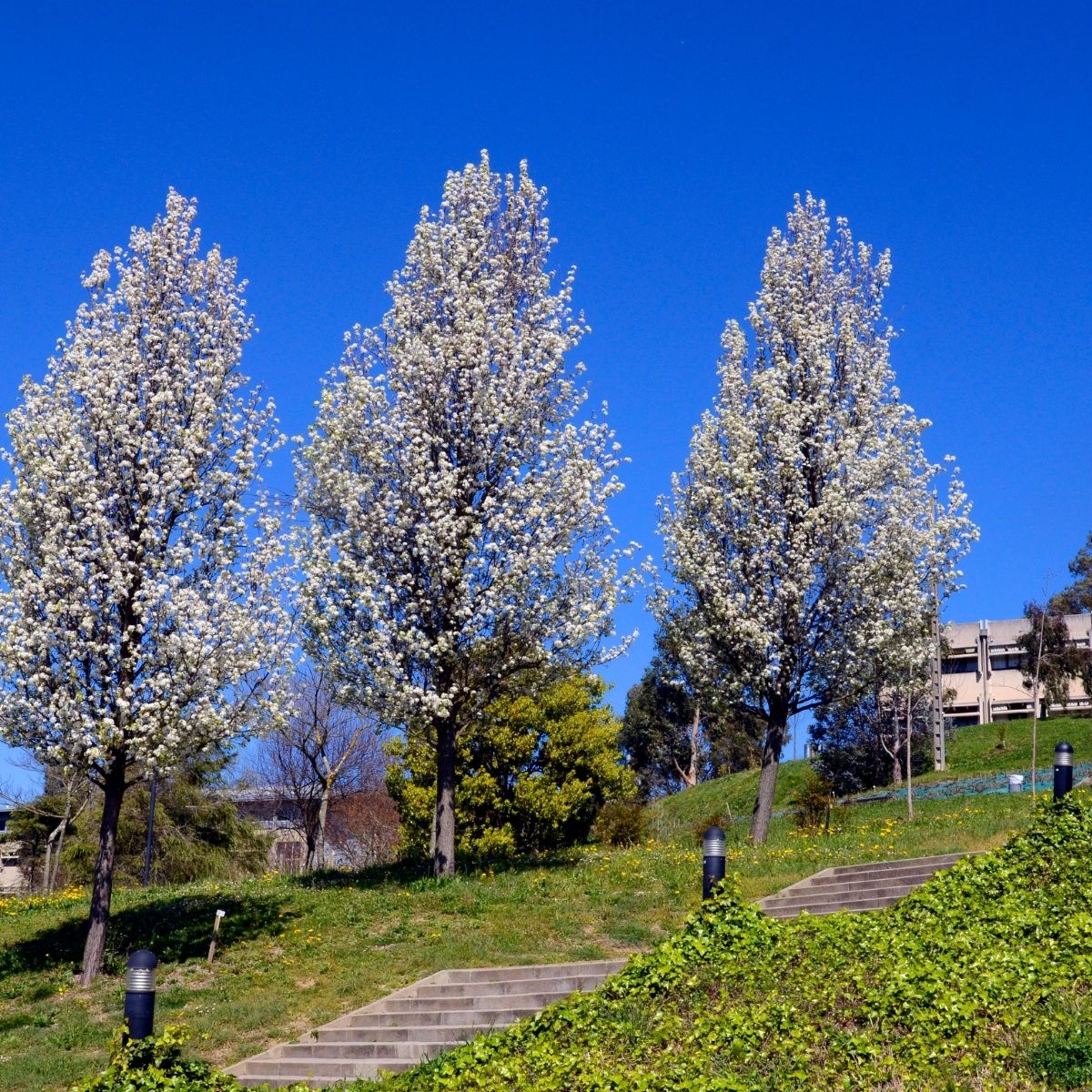
Growing 20 to 50 feet tall, Bradford pear trees produce masses of showy but foul-smelling white flowers in early spring. In the fall, their glossy, oval, dark-green leaves turn purple-red. With a poor crown structure, Bradford pears are likely to split in a bad storm, making them short-lived landscaping trees. Plus, they shade out native trees and other plants.
Removal requires cutting the tree down and applying herbicide to the stump to prevent resprouting. Attractive native trees to plant instead include Kentucky yellowwood (Cladrastis kentukea) and two-winged silverbell (Halesia diptera).
4. Chinese privet (Ligustrum sinense)
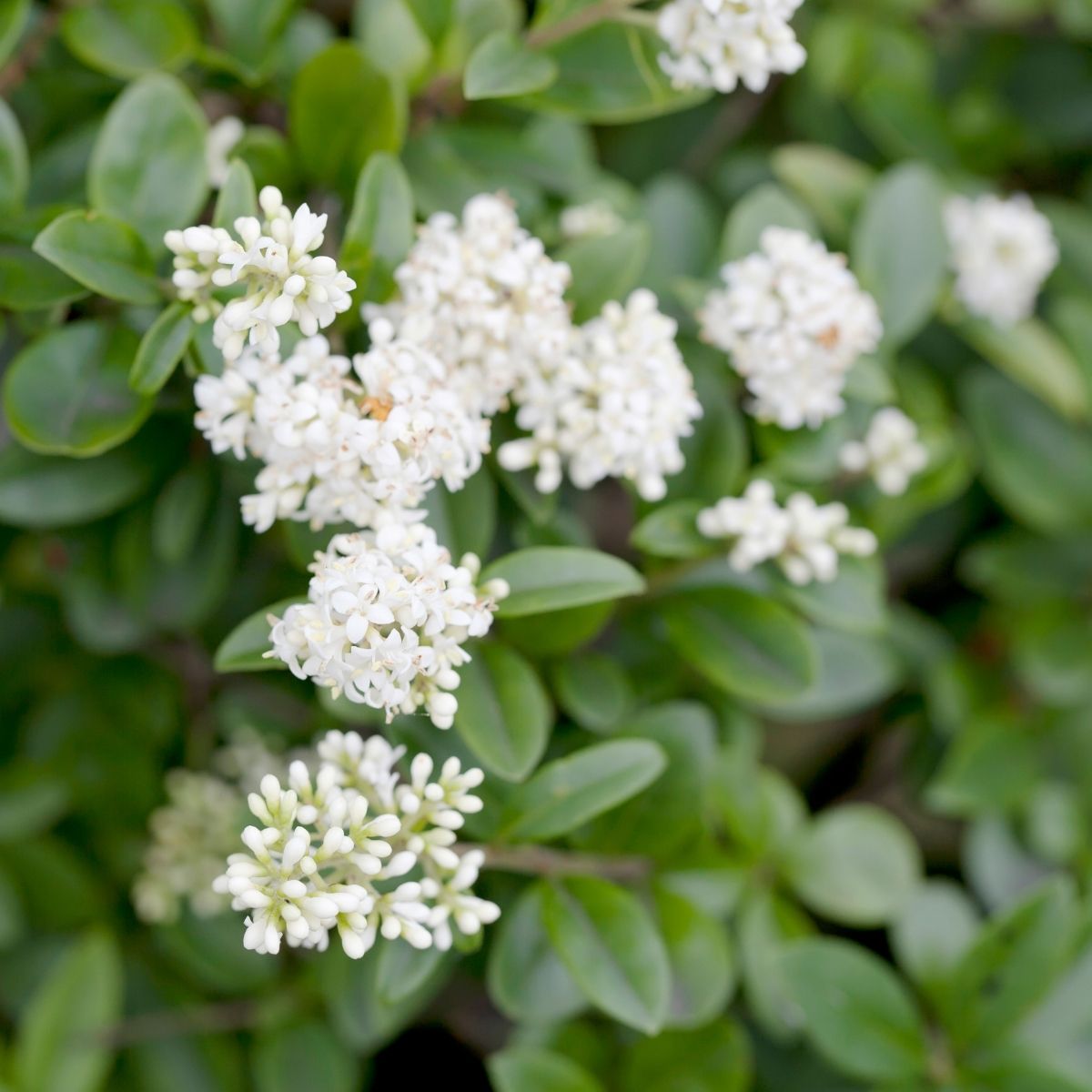
A semi-evergreen shrub reaching up to 30 feet tall, Chinese privet features small, shiny, rounded leaves on arching branches. Its small but fragrant white flowers are followed by bluish-purple berries. Chinese privet sprouts prolifically from the roots, forming dense thickets and crowding out native plants.
Small plants can be hand dug, while larger shrubs should be cut in the fall and the stumps painted with herbicide. Blackhaw viburnum (Viburnum prunifolium) makes a lovely native alternative, as does hoary mock orange (Philadelphus pubescens).
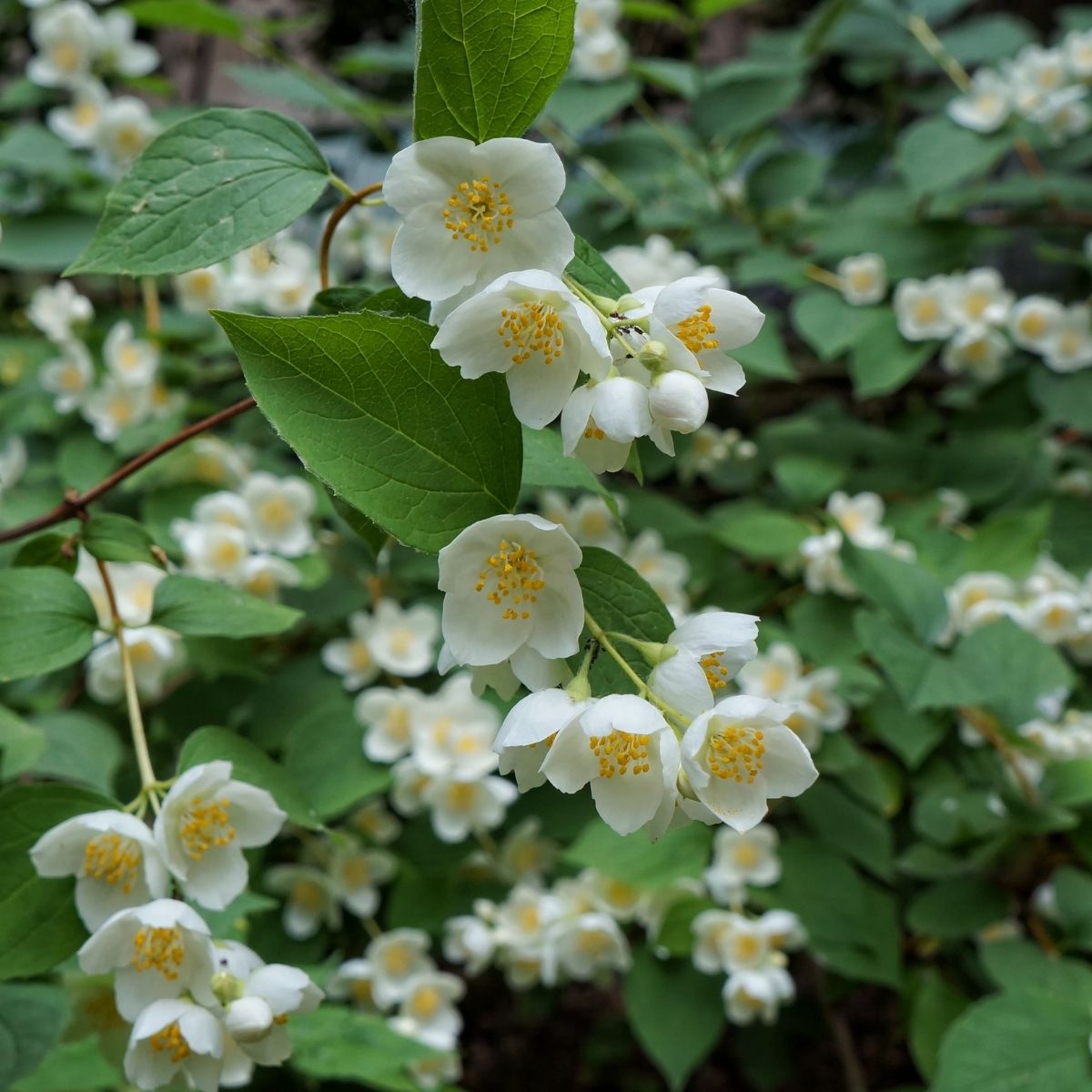
5. Cogon grass (Imperata cylindrica)
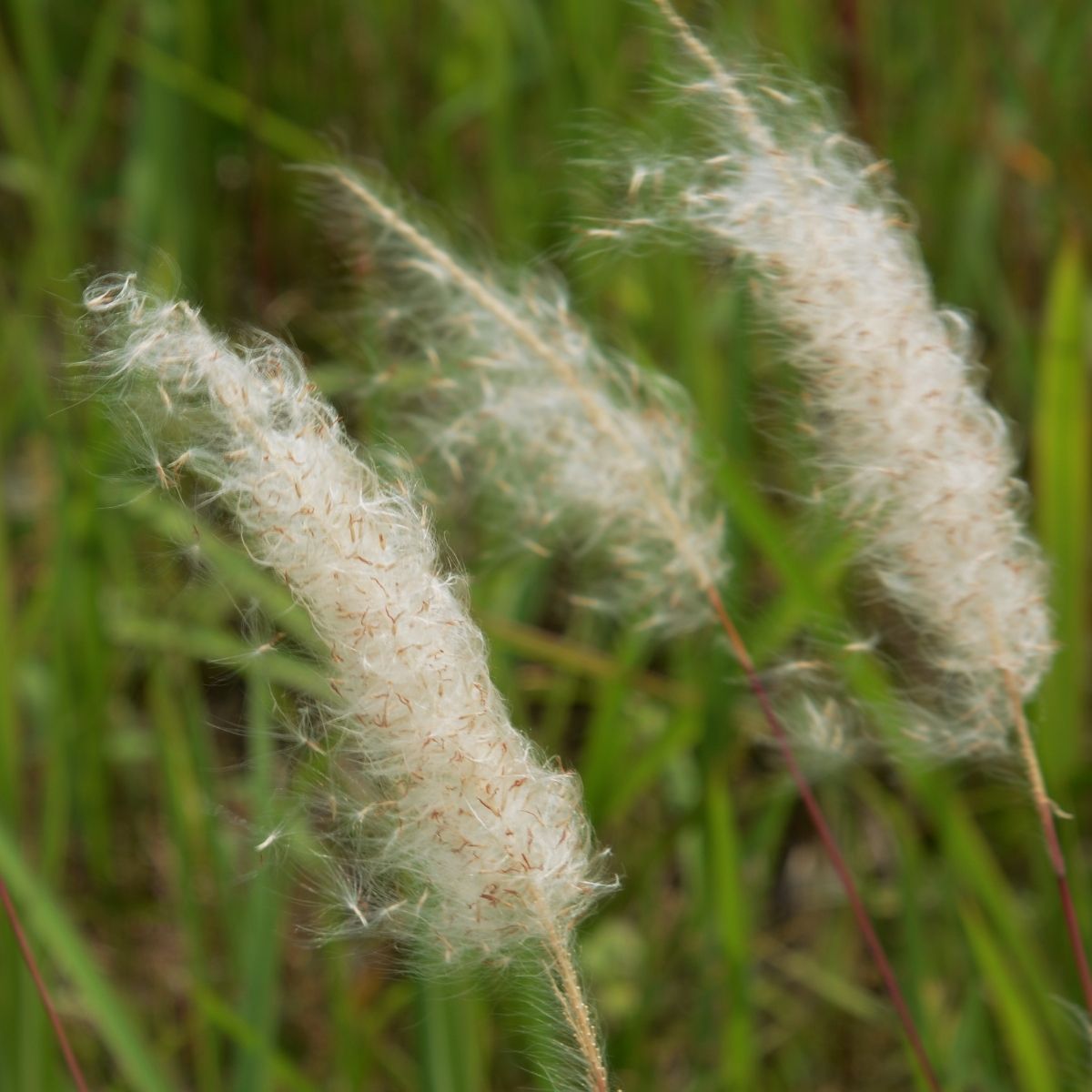
Commonly ranked among the ten worst weeds in the world, cogongrass spreads via windblown seeds and rhizomes caught on agricultural equipment. It invades a wide range of habitats and poses a fire hazard. Cogongrass has a prominent, pale midrib located off-center on each yellow-green leaf blade and fluffy, plume-like, white seed heads from two to eight inches long.
Repeated tilling or mowing works on newer patches of cogongrass, while more established infestations may require herbicide use. Plant native grasses and sedges, like hairy grama (Bouteloua hirsuta) or bristly sedge (Carex comosa).
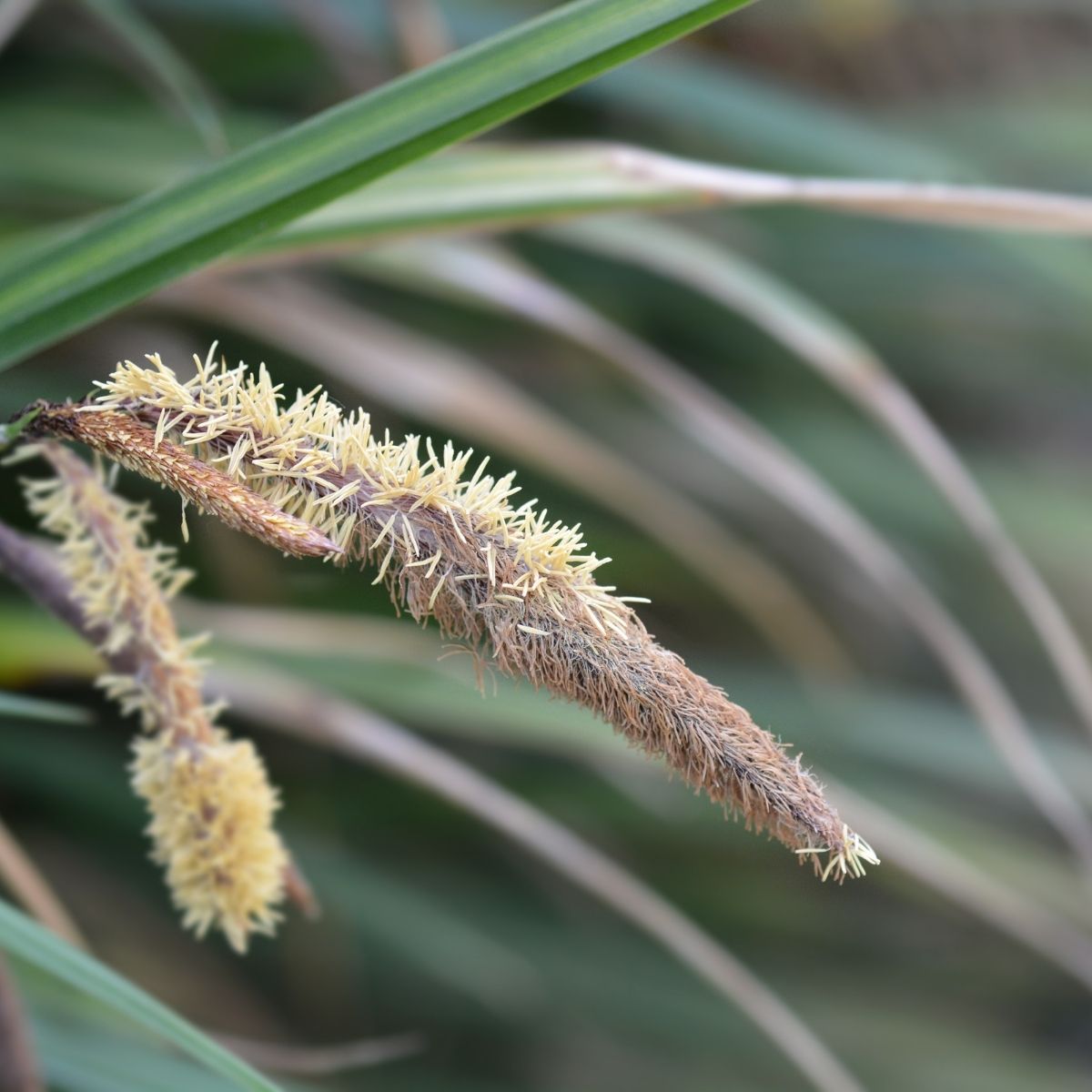
6. English ivy (Hedera helix)
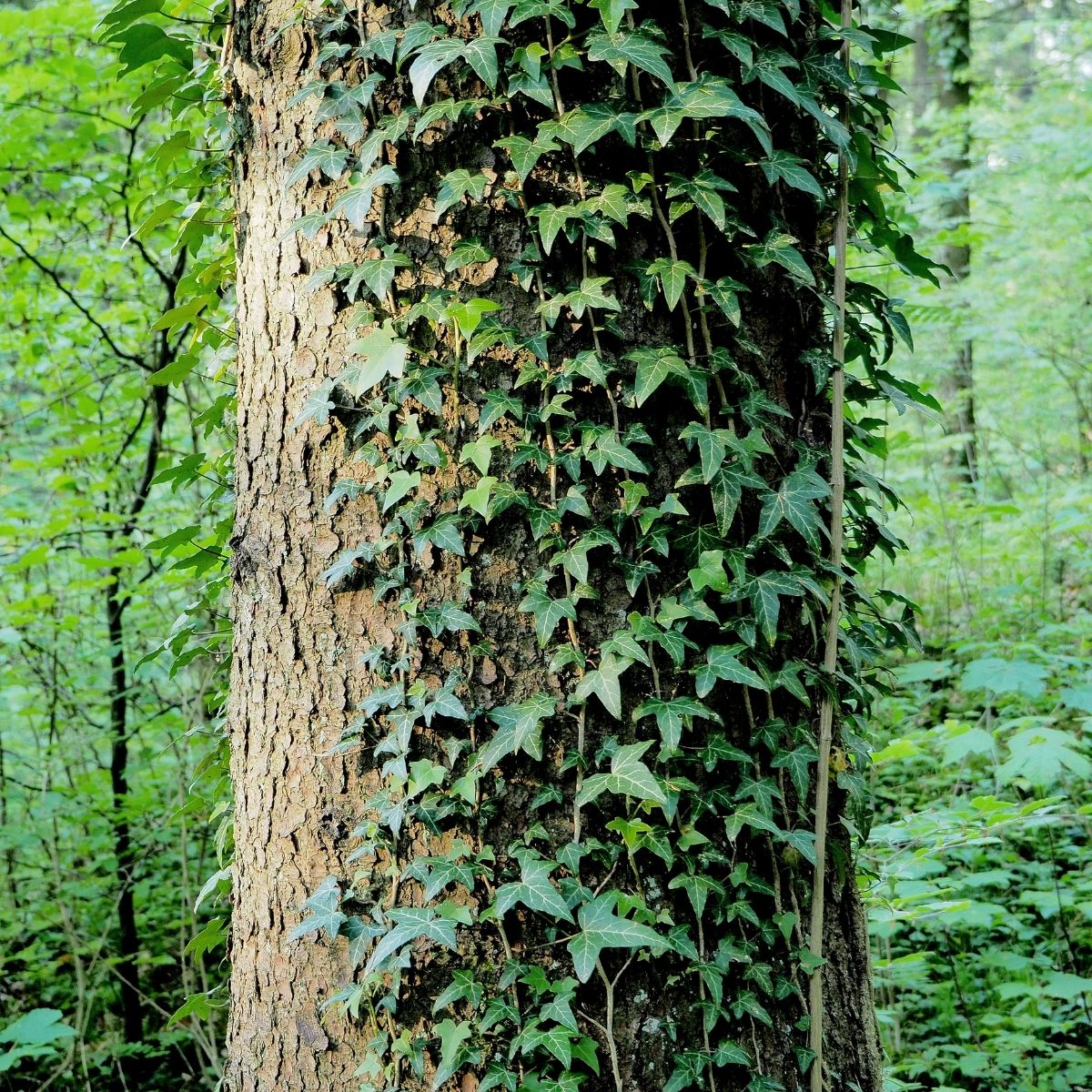
A classic evergreen vine, English ivy features woody stems covered in shiny, dark green leaves with pale veins. It spreads rapidly and attaches to vertical surfaces, damaging buildings and choking out native plants.
The best management technique is hand-pulling, making sure to dig up all roots. Replace with native vines or groundcovers like Virginia creeper (Parthenocissus quinquefolia) or partridge berry (Mitchella repens).
7. Heavenly bamboo (Nandina domestica)
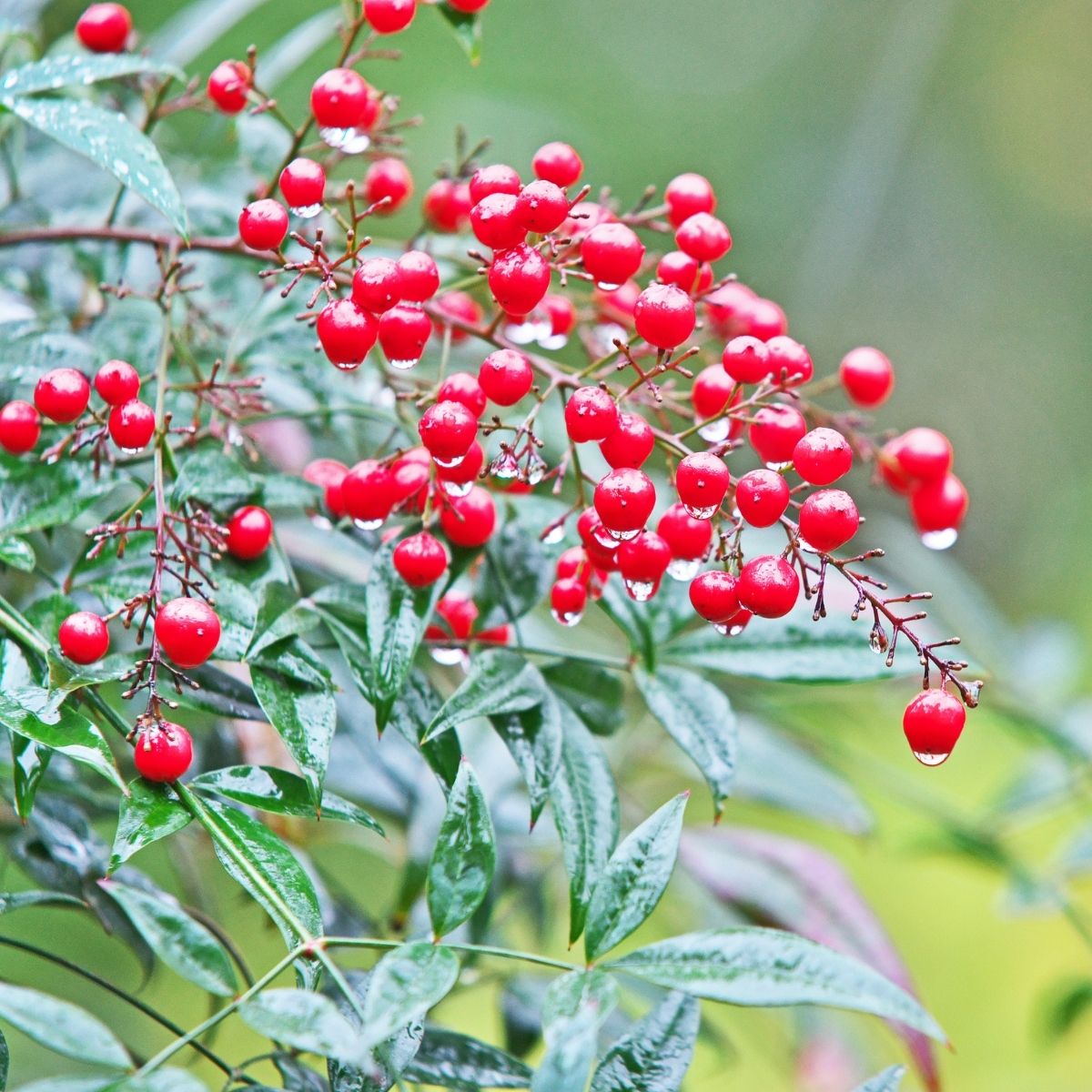
Heavenly bamboo, or nandina, has small, glossy, pointed leaflets that turn fiery red or deep maroon in winter. It produces creamy white flowers on terminal panicles, followed by clusters of bright red berries. These vibrant berries are toxic to domestic animals and wildlife, especially cedar waxwings.
Seedlings can be pulled by hand; established shrubs should be cut and painted with herbicide. Similar native shrubs include the American strawberry bush (Euonymus americanus) and Virginia sweetspire (Itea virginica).
8. Japanese honeysuckle (Lonicera japonica)
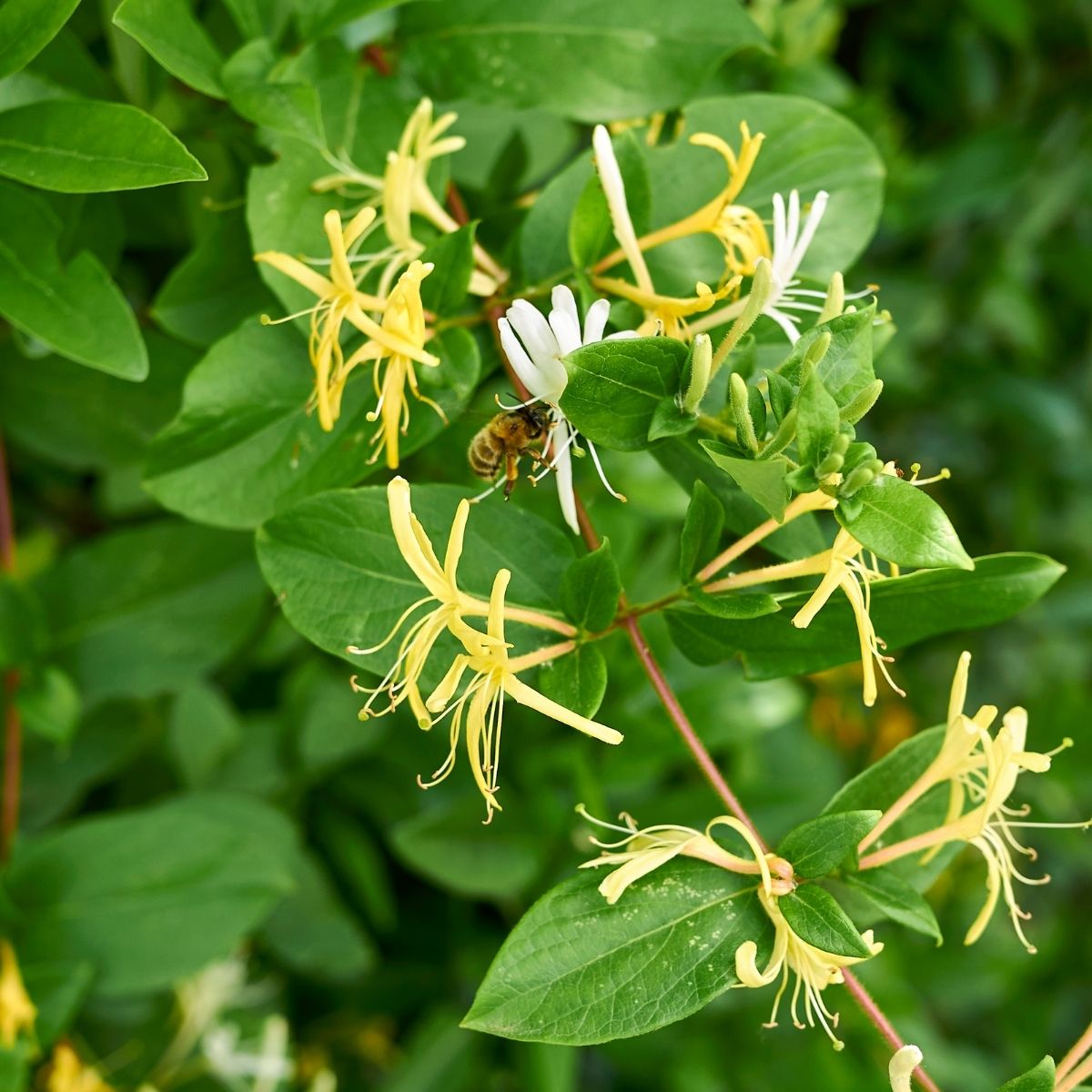
The slender, woody vines of Japanese honeysuckle are known for their sweetly fragrant, tubular, white, or yellow flowers. These vines grow extremely rapidly, crowding out native species and climbing trees to shade understory growth.
Smaller patches of Japanese honeysuckle can be hand-pulled. The native coral honeysuckle (Lonicera sempervirens) is a beautiful alternative, as is trumpet creeper (Campsis radicans).
9. Kudzu (Pueraria montana var. lobata)
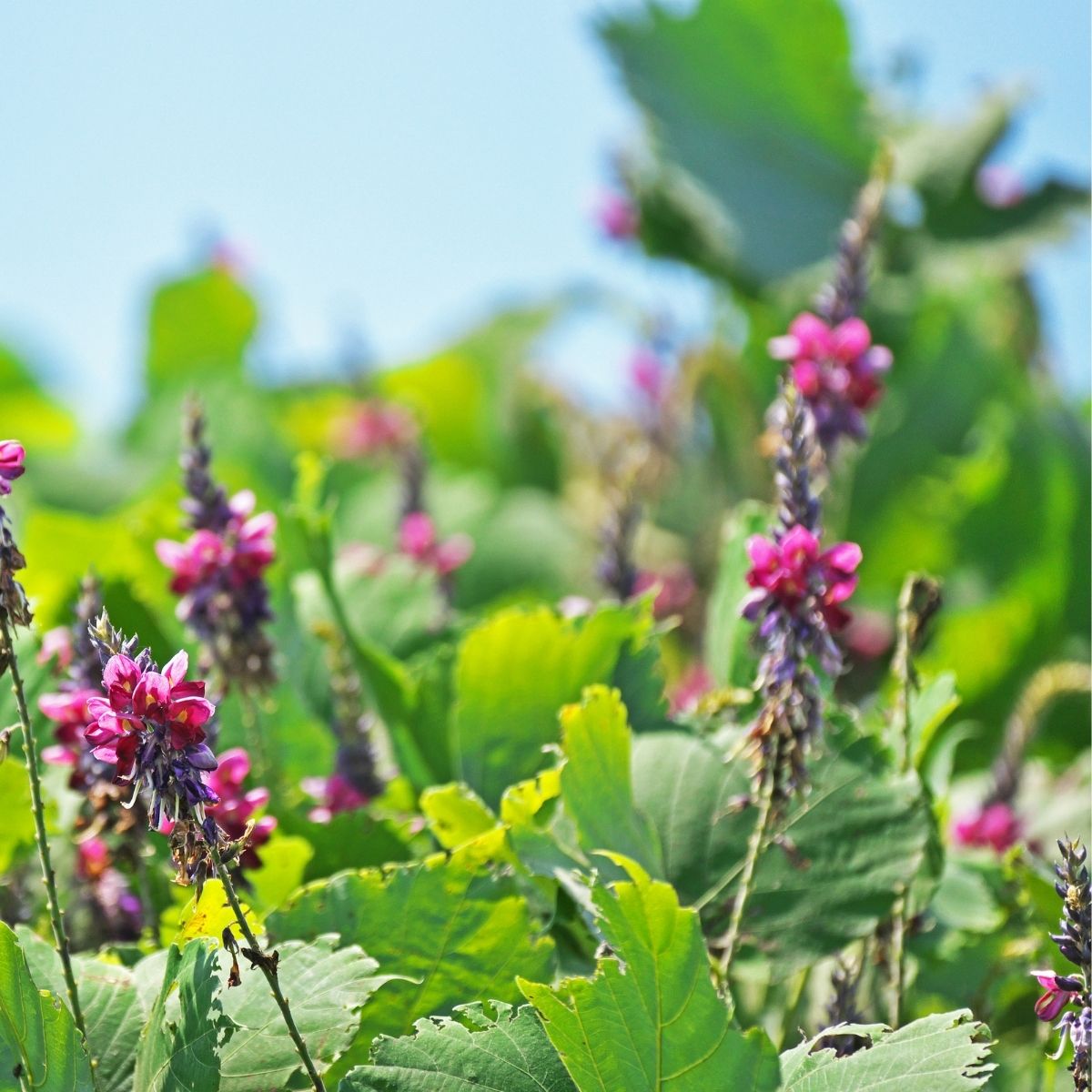
The infamous kudzu vine grows extremely rapidly, reaching up to 100 feet long and smothering entire trees. Its leaves consist of three large leaflets, and fragrant lavender or wine-colored flowers appear in clusters.
Effective control methods include late-season mowing or burning followed by herbicide application. Replace with native vines, such as American bittersweet (Celastrus scandens) or cross vine (Bignonia Capreolata).
10. Lespedeza (Lespedeza bicolor, L. cuneata)
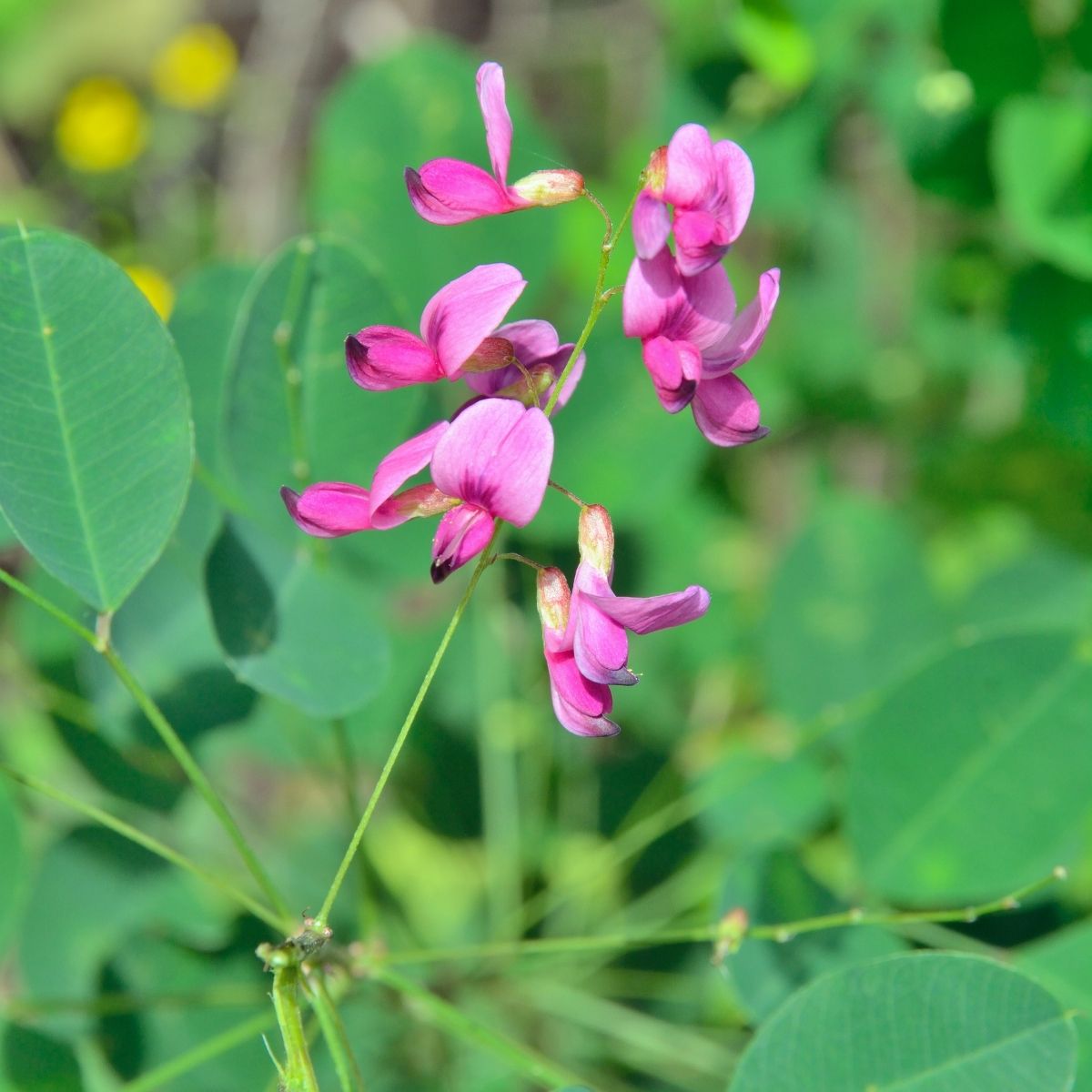
Shrubby and sericea lespedeza are both invasive species in Arkansas. Both have alternate leaves with three small, rounded leaflets and produce pea-like blossoms. But while shrubby lespedeza is a shrub, sericea lespedeza has a single stalk. These extremely aggressive plants displace native species.
Shrubby lespedeza may be manually removed, while herbicide works best on sericea lespedeza. Replace shrubby lespedeza with blue wild indigo (Baptisia australis) and sericea lespedeza with spider milkweed (Asclepias viridis).
11. Mimosa (Albizia julibrissin)
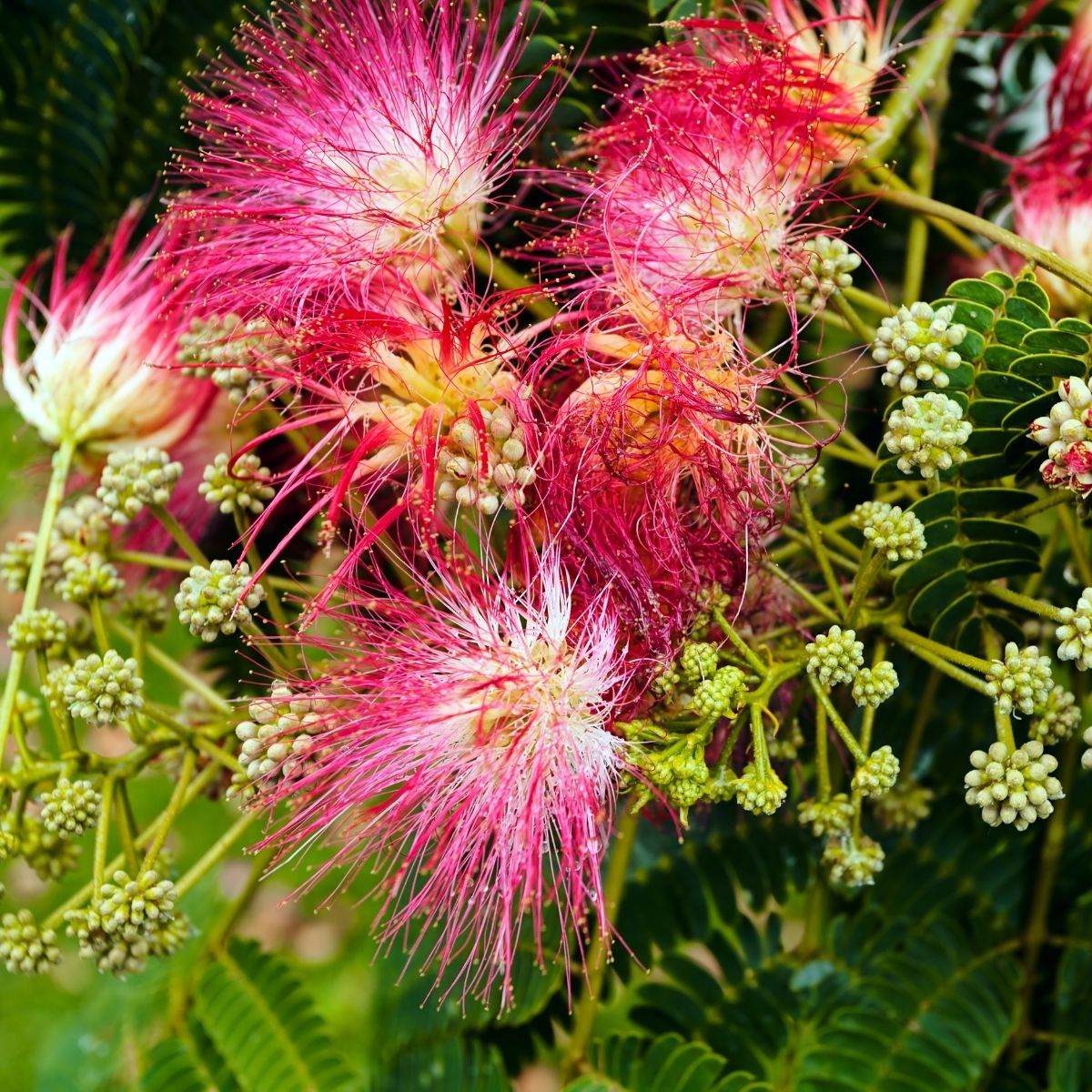
Known for its showy pink pom-pom flower clusters, the mimosa tree has fern-like leaves with tiny leaflets. It grows rapidly, reaching ten to 50 feet tall, and inhibits the growth of nearby plants through a chemical it produces. Long-lived seeds make it difficult to eradicate.
To remove mimosa, cut the tree down and apply herbicide to the stump. Plant showy native trees instead, such as flowering dogwood (Cornus florida) or fringe tree (Chionanthus virginicus).
The problem of invasive plants can feel overwhelming, but there are so many beautiful native plants to focus on as well! Help the native ecosystems of Arkansas by replacing invasive plants on your property with stunning native alternatives.
